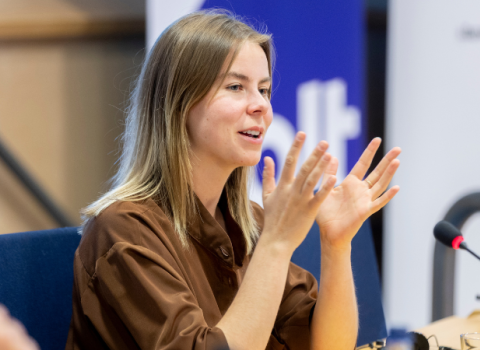A researcher at the University of Twente has invented a self-cleaning plastic that could be used to for containers such as cups that could be reused without washing.
The self-cleaning surface is modelled on the leaf of a lotus plant, which is ultra hyrophobic, that is water runs off the surface. This is due to the profile of the leaf, which consists of numerous tiny ‘pillars’ with a wax layer on top. Water drops are lifted up by the pillars, preventing them from covering the surface. This means that dirt cannot be transferred onto the surface via water. The water drops roll off and take dirt particles with them.
Max Groenendijk of the Applied Laser Technology Group of the University of Twente, has devised a method for imitating this surface on plastic, using an ultra fast femtosecond laser.
The light pulses from the laser are so short that they act like light ‘bullets’ bombarding the surface. The laser is applied in two separate steps. During the first step, the surface acquires a fine ripple structure. This is caused by a self-organising effect that works on most kinds of surfaces. Wherever the laser removes some material, a pattern of ripples forms. It is possible to influence this pattern by changing parameters such as speed, intensity and polarisation.
The second step involves writing a pattern of perpendicular lines, leaving an array of pillars. These pillars have a fine pattern on their exposed ends caused by the first step, which acts like the wax on the lotus leaf, making the surface of the pillars highly hydrophobic.
While treating each piece of plastic separately would be too expensive, it is possible to use the technique to produce molds.
As well as affecting the properties of plastic, the method also changes the look and feel of the material. A surface that has been treated feels like silk. This could be an added selling point for consumer products.




 A unique international forum for public research organisations and companies to connect their external engagement with strategic interests around their R&D system.
A unique international forum for public research organisations and companies to connect their external engagement with strategic interests around their R&D system.